bathroom tile FAQ's
This is going to take me a while, so I'll post as many as I can each night until it gets done. To start, here's the first set of questions and answers:
Okay, here we go. These questions come from the thread on the discussions side where I solicited questions from everyone for this thread. These are in the order they were asked:
Q) What are the different types of tiles you can use in a bathroom and what are the advantages/disadvantages of each?
A) There are several types of tile available. They fall into two general groups: ceramic and natural stone. I'll take these one at a time:
Ceramic tile-- For purposes of this discussion, there's glazed conventional, unglazed porcelain, and glazed porcelain. All three are good tiles for bathroom use, but the porcelain is a better choice only because of its density and lack of water absorbsion, which makes upkeep and cleaning easier. Also, with reference to steam showers, you DO NOT want to use natural stone, being that the steam would tend to permeate into the stone even more readily than liquid water, and could end up giving you algae problems, as well as mold and mildew problems, unless you don't mind being tied down to your bathroom.
Natural Stone-- There are several types of stone that are used in bathrooms. It doesn't necessarily mean that they're all GOOD IDEAS for bathrooms, expecially the softer (and more absorbant) stones, such as slate or limestone. Now, I know I'm going to get a world of flack about this from epople who have bathrooms finished in these materials. I know they CAN be used.... so long as you're aware of the extra upkeep involved. But if you're someone who doesn't like to keep after things, you may want to pick an easier material to maintain. Generally speaking, the softer the stone, the more the upkeep. Limestone being the softer of the stones, and that would include travertine, next would be many slates (although some would actually be harder than even most marbles, such as brazilian and british slates), then marbles, with quartzite and granite rounding off the list as the harder and more dense stones that you could use.
Q) What should I be sure to look for when choosing tile for a bathroom?
A) Short answer-- something that you like! The bathroom is the one place that just about anything the showroom has can be used. The only limitations are basically the upkeep you want to put in, and slip resistance on the floors of your bathroom and shower. Now, although ceramic tile is basically maintenence free, you don't want to use something with a texture to it that will catch all kinds of junk in the shower, making it more difficult to keep clean. At the same time, you don't want to use a polished stone or bright glazed ceramic tile for the shower floor, either. These both CAN be used, but again, it comes down to upkeep for textured wall tile, and doing something to rectify the slippery floor.
Q) Where should I use tile and where not?
A) Tile can be used on every single surface in the bathroom, if that's what you like. This is all a matter of taste... for the most part. About the only place where there's a requirement is any place there's a showerhead involved. If tile is to be used either in a shower or a tub/ shower combo, The tile MUST go up to a minimum of 72" off the floor. Past that, it's up to the disgression of the owner.
Q) What size tile and what layout patterns to use in various areas?
A) Again, this is a subjective question that can really only be answered by the owner. The ONLY place where there's a recommendation for mechaincal reasons is on a shower floor. TCNA recommends that mothing bigger than 6" be used on shower floors due to the cone shape of the floor's pitch. In addition, most installers will request no bigger than 4", and prefer a 2x2 tile to work with on the shower floor. This is also advantageous to the homeowner who'll be showering in there, because the added grout joints will add more traction to the floor.
Now, I've heard many times that you shouldn't use large format tiles in a small area like a powder room floor, and if you have a wide open bathroom, you don't want to use real small tiles. My response to both is the same-- HORSEHOCKEY. I've done bathrooms both ways-- 24x24 diagonal in a 3' wide powder room, and 1" hex ceramic mosaics in an open 100 sq. ft. bathroom floor. The rule of thumb is if you like it, it's right!
Q) How do I find/choose someone to install the tile?
A) Many people will tell you to get names from the showroom you get your tile from. This is no good, unless the showroom is willing to take responsibility for the installer by either having them on payrool, or as a subcontract. Then they have something to lose if they give you a bad installer. Many people will also tell you to get references and to actually check them out. This ALSO doesn't work. I've been in this work for just under 30 years now, and I've yet to find a single installer who ever gave the name of someone they had a problem with. They say even a blind squirrel will find a nut once in a while. The same can be said for "fly-by-nights" and good work.
So if you can't trust recommendations, and checking references is a lost cause, what do you do? REVERSE THE PROCESS!! Instead of finding an installer and getting references, get references, and thru them, find your installer!! No matter where you live, if you drive around, you'll find constructions sites and developements. Stop and ask who the GC uses. Get a name and phone number. Sooner or later, after asking around enough, you're going to find that the same names will begin to show up time and time again. THESE are the guys you want to use. But don't expect a bargain price, and be prepared to wait, because these guys will be in high demand, even in the worst of times, and they may demand a bit higher price, but they'll be worth every penny, if for no other reason, just because of the peace of mind they'll give you in knowing you're getting a good quality installation. Ask anyone who's gone through this experience, good or bad-- that alone is worth its weight in gold.
Q) What are the proper underlayments for tile?
A) There are several, and I'll take them one at a time:
CBU (cementitious Backer Units)-- This is the term that generally covers all cement boards (such as Wonderboard or Durock) or cement fiber boards (such as Hardibacker). This is the most common used tile underlayment. Generally speaking, it comes in two thicknesses-- 1/2" and 1/4"-- and each has its use. !/2" must be used for wall installations, due to the fact that the 1/4" is way too flimsy with nothing to back it up, and would flex too much to last. Besides, the 1/2" CBU will usually match up nicely to most sheetrocks. The 1/4" is used for floor installations, unless the added height of the 1/2" is needed to match up to other floorings. Being that neither has very much structural strength, so long as the subfloor is 3/4" or more, the 1/4" CBU is all that's needed. Keep in mind that even though it's basically fiberglass reinforced concrete, the only thing it adds to the floor is a stable bonding surface, so the 1/4" will do just fine. One place where alot of contractors will try and shortcut is by using greenboard instead of CBU for shower walls. This is expressly forbidden in the IRC (International Residential Code) by the following code:
IRC Greenboard Code:
The 2006 International Residential Code (IRC) states in
Section R702.4.2 that "Cement, fiber-cement or glass mat
gypsum backers in compliance with ASTM C1288, C1325
or C1178 and installed in accordance with manufacturers
recommendations shall be used as backers for wall tile in
tub and shower areas and wall panels in shower areas."
The 2006 IRC also states in Section R702.3.8.1 that
"Water-resistant gypsum backing board [Greenboard] shall
not be used where there will be direct exposure to water."
Membranes-- There are several around that work well over many different surfaces. Most of them are what's called "Crack Isolation Membranes". Just about every manufacturer has one, from trowel ons or roll ons, such as Hydroment's Ultraset or Laticrete's 9235 or Hydroban, to sheet membranes such as Noble's CIS membrane. All will give the tile a little more protection against movement than just going over CBU. However, there's another class of membranes called "uncoupling membranes" of which the most popular by far is Schluter's Ditra, that are made from bonding two layers together, usually a fabric fleece backing and a plastic sheeting with dovetailed waffling to "lock" the thinset in place ( as opposed to accepting a thinset BOND). These membranes will, as their name implies, uncouple their two layers in case of movement, to save the floor, and for thinset floors, it's the most protection you can give your tile floor.
Plywood-- This is one where I get the most flack. I'm one of a dying breed that still believes in tiling directly over plywood. However, I can very well understand the reluctance of the industry to embrace this installation method, even though the TCNA DOES approve of its use for interior installations (Those with a handbook can check Method F-149). The reason I say that is it's a very "tempermental installation method. You need to be very familiar with what you're doing, or you risk failure. There are even many pros I wouldn't trust to tile using this method. Everything you do is important, from the species of plywood used, to the direction the grain is laid with relation to the joists, to how it's gapped, and a host of other specs, as well-- many of which won't be found in the handbook, and if you miss just one of them, you're flirtin with disaster. All in all, when people ask me about it, I tell them that with the membranes available, there's no need to go directly over plywood. There are other methods that will give you just as long lasting a floor, and aren't NEARLY as sensitive.
Mudset-- This is the oldest, and still, after THOUSANDS of years of use, the strongest installation method available. In a mudset installation, a minimum of 1 1/4" of mortar called "drypack" (mixed to the consistancy of damp sand) is either bonded to a concrete slab, or laid down over tarpaper or 6 mil poly with wire reinforcement, packed, and then screaded off to flat level (or pitched) subfloor. This is what most people see when tiling a shower pan. Initially, the mud will be a somewhat soft subfloor. But over time, if mixed properly, it'll be stronger than concrete.
Q) What are the proper tile setting compounds?
A) This is one where I could write a book. It all depends on what kind fo tile you're installing, and what the underlayment is that you're going over. I'll give a generalized list:
Polymer/ latex modified thinset: For all intents and purposes, this is the "cure-all". For almost any installation the modified thinset, which is basically portland cement, silica sand, and chemical polymers added for strength, will work. There are some that are specialized, such as the lightweight non-sag thinsets (such as Laticrete's 255 or Mapei's Ultralite), or the high latex content thinsets (like Latictrete's 254 Platinum or Hydroment's Reflex), but with the exception of going over some membranes, there's a modified thinset for every installation.
Unmodified thinset: This is the same as above, but with no polymers added. It's usually used in conjunction with a liquid latex additive, but will also be used mixed with water for going over some membranes. It's also used as a bedding for all CBU's.
Medium Bed Mortars-- This is a relatively new class of setting mortars, used mainly for large format tiles, where the normal notched trowels just don't put down enough material, and with thinset, it would be too much, causing too much shrinkage as it dries, causing voids under, and poor bond to, the tile, but at the same time, there's not enoough room for a mudset installation. This mortar is usually used with either a 1/2x1/2" or 1/2x3/4" notched trowel.
Mastics and Premixed Thinsets: THESE HAVE VERY LIMITED USES!! Let me say that again-- THESE HAVE VERY LIMITED USES!! They work well for vertical installations, where the tile used is 8x8 or less, and it's not a wet area. ALL THREE of those conditions must be met!! I know just about every pail of type 1 mastic says it can be used in showers except for the floor. DON'T BELIEVE IT!! Also, both mastic and premixed thinset (which is just mastic with a fine sand mixed in to give it bulk) claim they can be used for floor installations. Unfortunately, for the amount of material needed under virtually all floor tiles to bond to the subfloor, neither of these will fully harden. I had a personal experience where I helped a sister in law across country, telling her husband exactly how to do his main floor, what to use, and how to use it. Unfortunately, he went to the big box store to get his tile and materials, and they talked him into using premixed thinset. I didn't hear about it until SIX MONTHS LATER when his tile and grout joints started showing cracks all over the floor. When he called me I asked him what he used for thinset, and sure enough, this is when he told me. I told him to pull one of the tiles, and SIX MONTHS LATER, IT WAS STILL SOFT!!! DOn't let them talk you into it!! Use the proper thinset, and don't try and shortcut your installation. You're spending alot of money for it to be "just practice"!!
Q) How do you deal with different thicknesses of tile?
A) Whatever it takes. I've used membranes, built up the amount of thinset being used, I've even doubled up tiles when it worked out that way. Whatever it takes to get the two tiles to be flush toeach other.
Q) What are the typical tools required to lay tile?
A) Generally speaking, this is a list for just about all installations. Some may require specialized tools, but this would be for all:
Proper sized notched trowel
measuring tape
chalk line
margin trowel
nippers
high amp low speed drill and mixing paddle (best would be 6 amp or better and less than 400 rpm)
several buckets
score and snap cutter for straight ceramic cuts
4 1/2" grinder with a continuous rim dry diamond blade for ceramic, anything other than straight cuts
wet saw (can be used for ALL cuts, ceramic or stone)
grout float
hydra grout sponges (2-- once for grouting, one for cleaning)
24" and 48" levels (for vertical work)
heavy duty extension cords
KINEE PADS!! :-)
screwgun or nailgun (where CBU will be used)
Q) What about tile spacing and tpes of grout?
A) According to Dave Gobis from the Ceramic Tile Education Foundation in Pendleton, South Carolina, there will finally be a new standard for ceramic tile next year. The tolerances are shrinking. There will also be a standard for rectified tile. Along with that, there will be a revision to the installation standards that will specifically recommend a grout joint no less than 3 times the variation of the tile. For rectified tile the minimum grout joint width will be .075 or just over a 1/16".
As for grout, there's only one thing that determines whether you use sanded or unsanded grout, and that's the size of the grout joint. Anything less than 1/8" you use unsanded grout. 1/8" or larger, you need to use sanded grout. The reason is that the main ingredient in grout is porland cement, which tends to shrink as it dries. In joints 1/8" or larger, the grout will shrink way too much and end up cracking ans shrinking into the joint. The sand give the grout bulk, and the sanded grout won't shrink nearly as much and therefore, can be used in the larger joints.
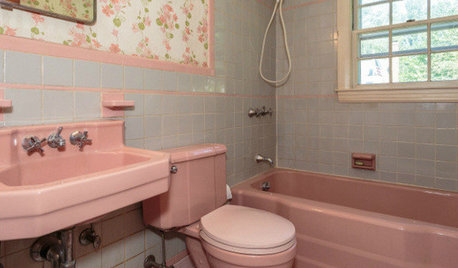
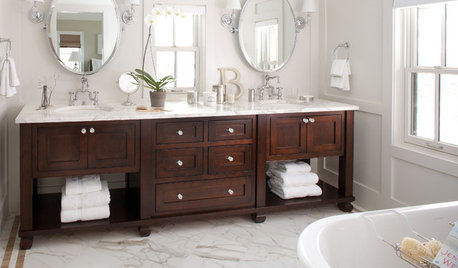
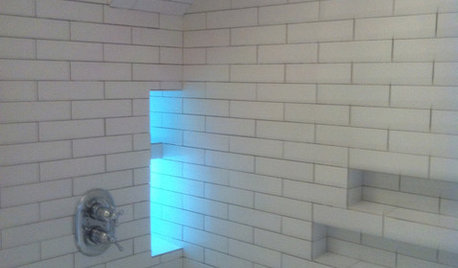
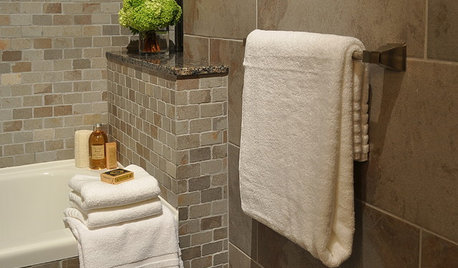
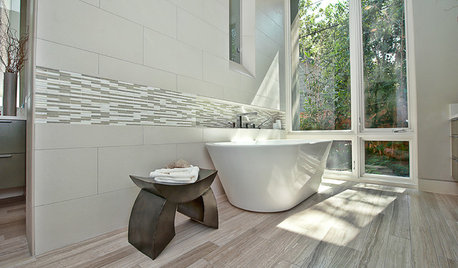
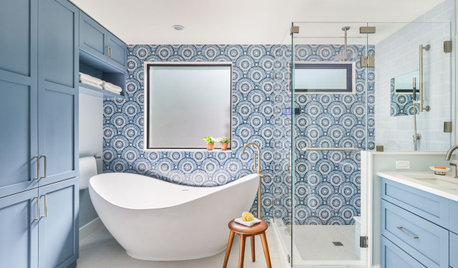
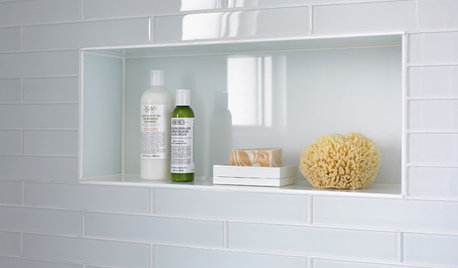
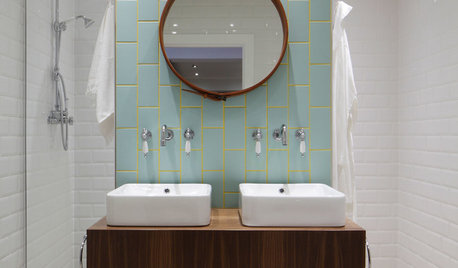

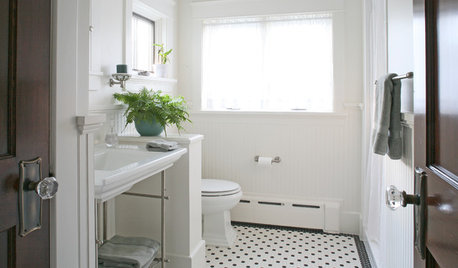








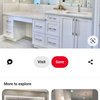
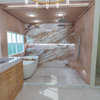
bill_vincentOriginal Author
weekendwarrior_2009
Related Professionals
Bethel Park Kitchen & Bathroom Remodelers · Camarillo Kitchen & Bathroom Remodelers · Hanover Township Kitchen & Bathroom Remodelers · Barstow Heights Glass & Shower Door Dealers · Galena Park Glass & Shower Door Dealers · Philadelphia Glass & Shower Door Dealers · Niles Glass & Shower Door Dealers · San Tan Valley Glass & Shower Door Dealers · Alafaya Cabinets & Cabinetry · Daly City Cabinets & Cabinetry · Holt Cabinets & Cabinetry · Hopkinsville Cabinets & Cabinetry · Rowland Heights Cabinets & Cabinetry · St. Louis Window Treatments · Woodridge Window Treatmentsbill_vincentOriginal Author
weekendwarrior_2009
boymom
bill_vincentOriginal Author
debra-lee
bill_vincentOriginal Author
bill_vincentOriginal Author
Newyorking
bill_vincentOriginal Author
bkw1
bill_vincentOriginal Author
bkw1
july3feb2
lamermaid
lamermaid
colibri5
letter100
bill_vincentOriginal Author
t-ren
sonepi
curly09
nansea
brianloffredo_yahoo_com
debo_2006
bill_vincentOriginal Author
pinch_me
bill_vincentOriginal Author
redoinghome
rmkitchen
bill_vincentOriginal Author
OrchidOCD
finallyrenovating
SparklingWater
SparklingWater
dceleste
bill_vincentOriginal Author
stellawinslet
jeenasmith
martdes43
slgn
bill_vincentOriginal Author
sreedesq
bill_vincentOriginal Author
DamonK
sandmansrm
Rachele Binkoski
MongoCT
nansea